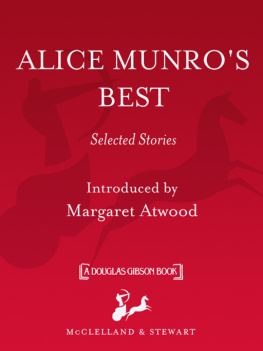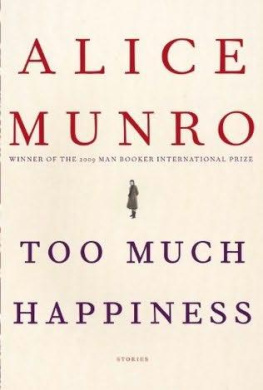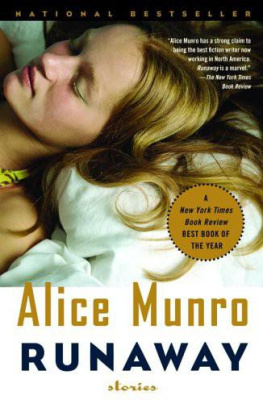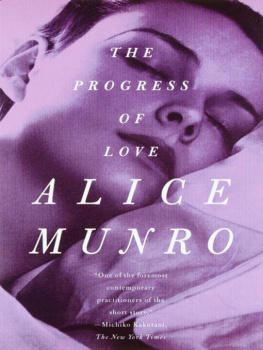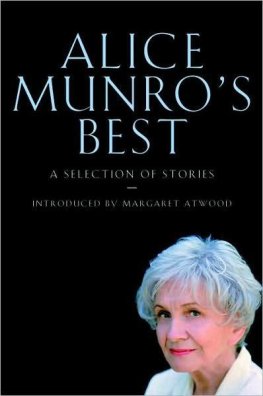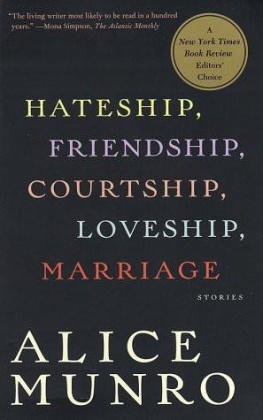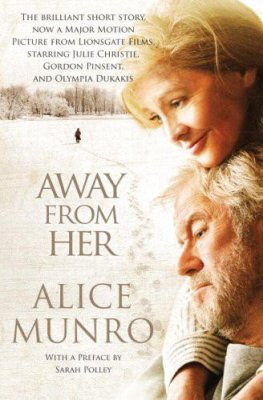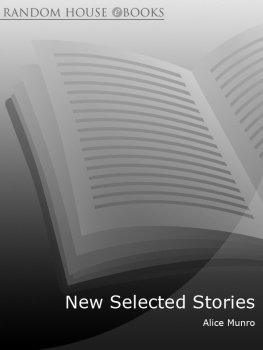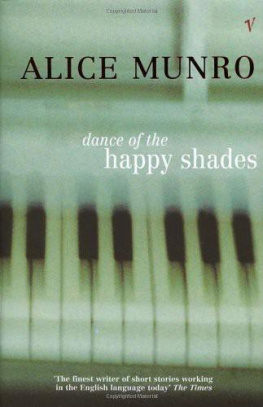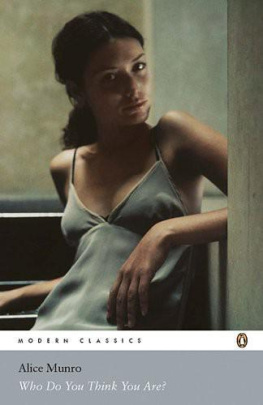Alice Munro - The View from Castle Rock: Stories
Here you can read online Alice Munro - The View from Castle Rock: Stories full text of the book (entire story) in english for free. Download pdf and epub, get meaning, cover and reviews about this ebook. year: 2006, publisher: Knopf, genre: Art. Description of the work, (preface) as well as reviews are available. Best literature library LitArk.com created for fans of good reading and offers a wide selection of genres:
Romance novel
Science fiction
Adventure
Detective
Science
History
Home and family
Prose
Art
Politics
Computer
Non-fiction
Religion
Business
Children
Humor
Choose a favorite category and find really read worthwhile books. Enjoy immersion in the world of imagination, feel the emotions of the characters or learn something new for yourself, make an fascinating discovery.

- Book:The View from Castle Rock: Stories
- Author:
- Publisher:Knopf
- Genre:
- Year:2006
- Rating:4 / 5
- Favourites:Add to favourites
- Your mark:
- 80
- 1
- 2
- 3
- 4
- 5
The View from Castle Rock: Stories: summary, description and annotation
We offer to read an annotation, description, summary or preface (depends on what the author of the book "The View from Castle Rock: Stories" wrote himself). If you haven't found the necessary information about the book — write in the comments, we will try to find it.
The View from Castle Rock: Stories — read online for free the complete book (whole text) full work
Below is the text of the book, divided by pages. System saving the place of the last page read, allows you to conveniently read the book "The View from Castle Rock: Stories" online for free, without having to search again every time where you left off. Put a bookmark, and you can go to the page where you finished reading at any time.
Font size:
Interval:
Bookmark:
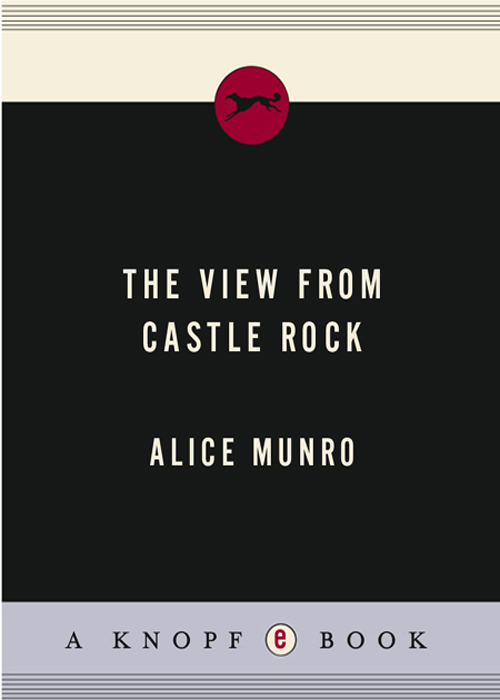
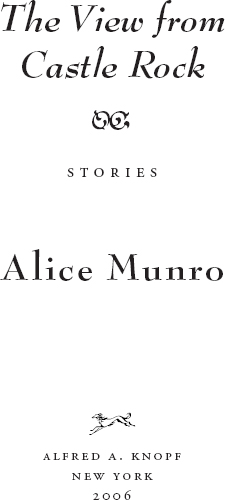
CONTENTS
Dedicated to Douglas Gibson,
who has sustained me through many travails,
and whose enthusiasm for this particular book
has even sent him prowling through the graveyard
of Ettrick Kirk, probably in the rain.
FOREWORD
About ten or twelve years ago I began to take more than a random interest in the history of one side of my family, whose name was Laidlaw. There was a good deal of information lying around about themreally an unusual amount, considering that they were obscure and not prosperous, and living in the Ettrick Valley, which the Statistical Account of Scotland (1799) describes as having no advantages. I lived in Scotland for a few months, close to the Ettrick Valley, so I was able to find their names in the local histories in the Selkirk and Galashiels Public Libraries, and to find out what James Hogg had to say about them in Blackwoods Magazine. Hoggs mother was a Laidlaw, and he took Walter Scott to see her when Scott was collecting ballads for The Minstrelsy of the Scottish Border. (She supplied some, though she later took offense at their being printed.) And I was lucky, in that every generation of our family seemed to produce somebody who went in for writing long, outspoken, sometimes outrageous letters, and detailed recollections. Scotland was the country, remember, where John Knox had decided that every child should learn to read and write, in some sort of village school, so that everybody could read the Bible.
It didnt stop there.
I put all this material together over the years, and almost without my noticing what was happening, it began to shape itself, here and there, into something like stories. Some of the characters gave themselves to me in their own words, others rose out of their situations. Their words and my words, a curious re-creation of lives, in a given setting that was as truthful as our notion of the past can ever be.
During these years I was also writing a special set of stories. These stories were not included in the books of fiction I put together, at regular intervals. Why not? I felt they didnt belong. They were not memoirs but they were closer to my own life than the other stories I had written, even in the first person. In other first-person stories I had drawn on personal material, but then I did anything I wanted to with this material. Because the chief thing I was doing was making a story. In the stories I hadnt collected I was not doing exactly that. I was doing something closer to what a memoir doesexploring a life, my own life, but not in an austere or rigorously factual way. I put myself in the center and wrote about that self, as searchingly as I could. But the figures around this self took on their own life and color and did things they had not done in reality. They joined the Salvation Army, they revealed that they had once lived in Chicago. One of them got himself electrocuted and another fired off a gun in a barn full of horses. In fact, some of these characters have moved so far from their beginnings that I cannot remember who they were to start with.
These are stories.
You could say that such stories pay more attention to the truth of a life than fiction usually does. But not enough to swear on. And the part of this book that might be called family history has expanded into fiction, but always within the outline of a true narrative. With these developments the two streams came close enough together that they seemed to me meant to flow in one channel, as they do in this book.
PART ONE
No Advantages

No Advantages
This parish possesses no advantages. Upon the hills the soil is in many places mossy and fit for nothing. The air in general is moist. This is occasioned by the height of the hills which continually attract the clouds and the vapour that is continually exhaled from the mossy groundThe nearest market town is fifteen miles away and the roads so deep as to be almost impassable. The snow also at times is a great inconvenience, often for many months we can have no intercourse with mankind. And a great disadvantage is the want of bridges so that the traveller is obstructed when the waters are swelledBarley oats and potatoes are the only crops raised. Wheat rye turnips and cabbage are never attempted
There are ten proprietors of land in this parish: none of them resides in it.
Contribution by the Minister of Ettrick Parish, in the county of Selkirk, to the Statistical Account of Scotland, 1799
The Ettrick Valley lies about fifty miles due south of Edinburgh, and thirty or so miles north of the English border, which runs close to the wall Hadrian built to keep out the wild people from the north. During the reign of Antoninus the Romans pushed farther, and built a line of fortification between the Firth of Clyde and the Firth of Forth, but that was not so lasting. The land between the two walls has been occupied for a long time by a mix of peopleCeltic people, some of whom came from Ireland and were called Scots, also Anglo-Saxons from the south, Norse from across the North Sea, and possibly some leftover Picts as well.
The high stony farm where my family lived for some time in the Ettrick Valley was called Far-Hope. The word hope, as used in the local geography, is an old word, a Norse wordNorse, Anglo-Saxon, and Gaelic words being all mixed up together in that part of the country, as you would expect, with some old Brythonic thrown in to indicate an early Welsh presence. Hope means a bay, not a bay filled with water but with land, partly enclosed by hills, which in this case are the high bare hills, the near mountains of the Southern Uplands. The Black Knowe, Bodesbeck Law, Ettrick Penthere you have the three big hills, with the word hill in three languages. Some of these hills are now being reforested, with plantations of Sitka spruce, but in the seventeenth and eighteenth centuries they would have been bare, or mostly barethe great Forest of Ettrick, the hunting grounds of the Kings of Scotland, having been cut down and turned into pasture or waste heath a century or two before.
The height of land above Far-Hope, which stands right at the end of the valley, is the spine of Scotland, marking the division of the waters that flow to the west into the Solway Firth and the Atlantic Ocean, from those that flow east into the North Sea. Within ten miles to the north is the countrys most famous waterfall, the Grey Mares Tail. Five miles from Moffat, which would be the market town to those living at the valley head, is the Devils Beef Tub, a great cleft in the hills believed to be the hiding place for stolen cattleEnglish cattle, that is, taken by the reivers in the lawless sixteenth century. In the lower Ettrick Valley was Aikwood, the home of Michael Scott, the philosopher and wizard of the twelfth and thirteenth centuries, who appears in Dantes Inferno. And if that were not enough, William Wallace, the guerrilla hero of the Scots, is said to have hidden out here from the English, and there is a story of MerlinMerlinbeing hunted down and murdered, in the old forest, by Ettrick shepherds.
(As far as I know, my ancestors, generation after generation, were Ettrick shepherds. It may sound odd to have shepherds employed in a forest, but it seems that hunting forests were in many places open glades.)
Font size:
Interval:
Bookmark:
Similar books «The View from Castle Rock: Stories»
Look at similar books to The View from Castle Rock: Stories. We have selected literature similar in name and meaning in the hope of providing readers with more options to find new, interesting, not yet read works.
Discussion, reviews of the book The View from Castle Rock: Stories and just readers' own opinions. Leave your comments, write what you think about the work, its meaning or the main characters. Specify what exactly you liked and what you didn't like, and why you think so.

